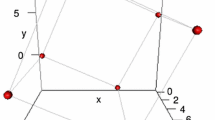Abstract
One of the main tasks of shoe manufacturing is the production of well fitting shoes for different specialized markets. The key to conduct this properly is the analysis of the factors that influence the variations of the foot shape. In this paper methods and results of clustering and analysis of 3D foot surfaces are presented. The data were collected from a study with more than 12,000 feet that have been laser-scanned. The database contains point clouds acquired from persons coming from different regions of the world. Furthermore, additional personal data were collected. Two different methods for quantifying the similarity of 3D surface point clouds are therefore developed. The first method generally works on nearly arbitrary 3D surface point clouds, while the second one is specialized on foot data sets. These similarity measures were used on the data sets of the foot-shape study, together with clustering and feature quality evaluation methods. The purpose was to obtain information about the impact of, and the relationship among, the different factors influencing the shape of a foot. Through the observations of the experiments presented here it was possible to build up a hierarchy of different levels of feature-groups determined by their impact on the foot shape. Furthermore, an investigation of the quality and amount of impact of the features, according to their ability to separate specific subgroups of persons, is shown. Based on these results it was possible to select those features, which result in the largest effect when designing shoes for e.g. the Asian versus European markets.
Similar content being viewed by others
References
Wunderlich R., Cavanagh P.: Gender difference in adult foot shape: implications for shoe design. Med. Sci. Sports Exerc. 33(4), 605–611 (2001)
Luximon A., Goonetilleke R., Tsui K.: The customer centric enterprise. Advantages of mass customization and personalization. Footwear Fit Categorization 29, 491–499 (2003)
Mochimaru M., Kouchi M., Dohi M.: Analysis of 3-D human foot forms using the free form deformation method and its application in grading shoe lasts. Ergonomics 43(9), 1301–1313 (2000)
Leng J., Du R.: A deformation method for shoe last customization. Comput. Aided Des. Appl. 2(1–4), 11–18 (2005)
Chellappa R., Wilson C., Sirohey S.: Human and machine recognition of faces: a survey. Pro. IEEE 83(4), 705–740 (1995)
Heisele B., Serre T., Pontil M., Vetter T., Poggio T.: Categorization by learning and combining object parts. Adv. Neural Inf. Process. Syst. 2(14), 1239–1245 (2002)
Bustos B., Keim D., Saupe D., Schreck T., Vranic̀ D.: An experimental effectiveness comparison of methods for 3D similarity search. Int. J. Digit. Libr. 6(1), 39–54 (2006)
Sammon J., John W.: A nonlinear mapping for data structure analysis. IEEE Trans. Comput. C-18, 401–409 (1969)
Tillmann C., Ney H.: Word reordering and a dynamic programming beam search algorithm for statistical machine translation. Comput. Linguist. 29(1), 97–133 (2003)
Author information
Authors and Affiliations
Corresponding author
Rights and permissions
About this article
Cite this article
Grimmer, R., Eskofier, B., Schlarb, H. et al. Comparison and classification of 3D objects surface point clouds on the example of feet. Machine Vision and Applications 22, 235–243 (2011). https://doi.org/10.1007/s00138-009-0230-y
Received:
Revised:
Accepted:
Published:
Issue Date:
DOI: https://doi.org/10.1007/s00138-009-0230-y




